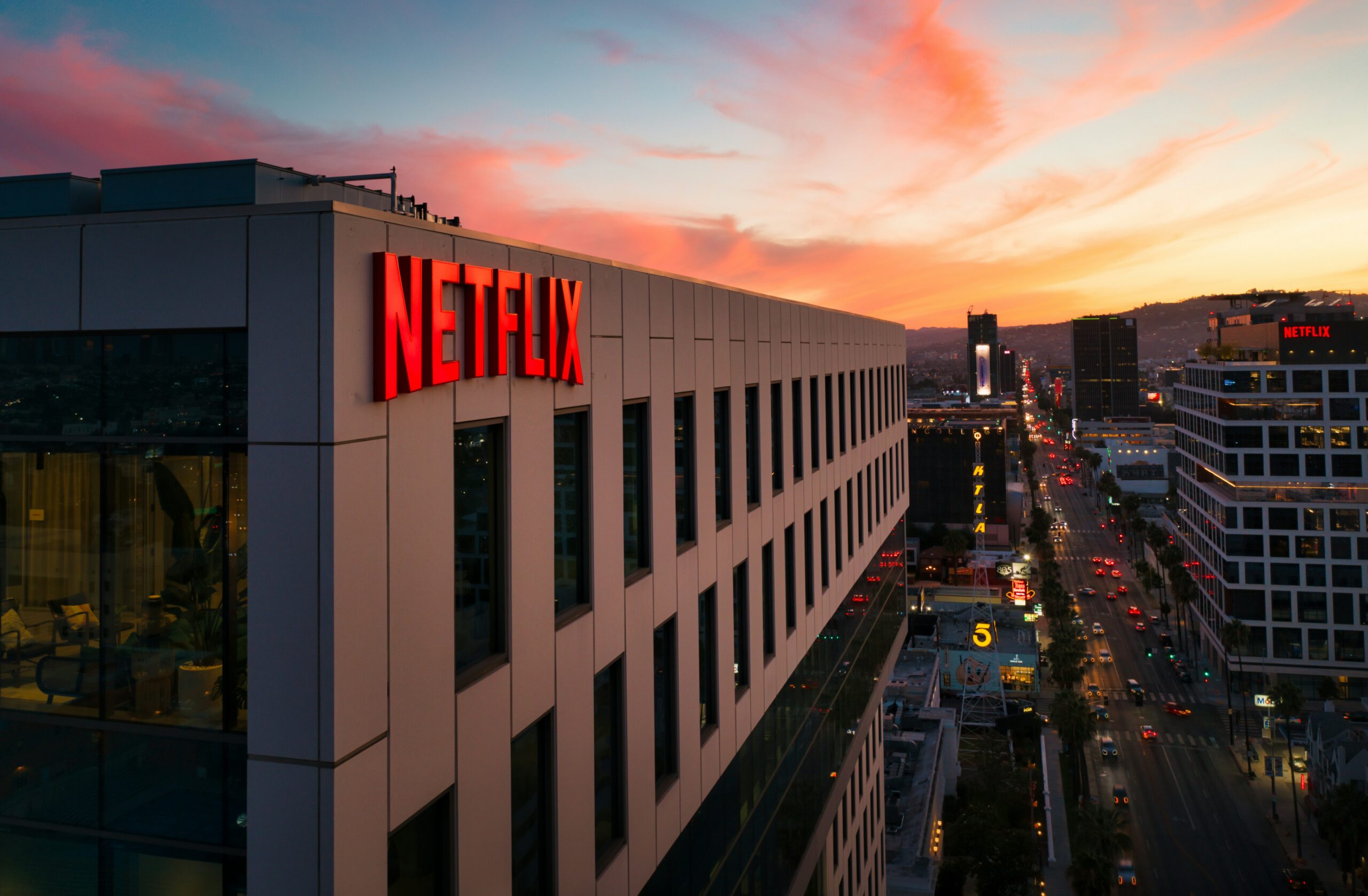Netflix has once again demonstrated its dominance in the global streaming landscape with 5.1 million new subscribers added in Q3 2024, surpassing Wall Street expectations. With 282.7 million global paid subscribers, the platform’s growth this quarter signals strategic advancements across multiple areas, especially in its ad-supported business model and focus on profitability. This article will break down the key figures, financial performance, and ad initiatives, along with Netflix’s broader strategy as the company aims to redefine its future beyond subscriber metrics.
Key Metrics: Breaking Down Netflix’s Performance in Q3 2024
Netflix’s Q3 2024 financial and membership metrics highlight steady growth. Here’s a quick summary of the key figures:
- 5.1 million new subscribers added, bringing total global paid subscribers to 282.7 million.
- $9.83 billion in revenue, a 15% increase from Q3 2023.
- Operating margin of 30%, compared to 22% a year earlier.
- $5.40 earnings per share (EPS), beating Wall Street’s estimate of $5.12.
- 150% increase in ad sales commitments during the 2024 Upfront season.
These metrics reflect the company’s effective balancing of content investments, subscriber growth, and profitability—an approach that helps Netflix maintain its leadership position even in saturated markets like North America.
Regional Growth and Market Maturity Challenges
The majority of the 5.1 million new subscribers came from international markets, while growth in North America has begun to level off. Of the new additions, only 690,000 came from the U.S. and Canada, underscoring the challenges Netflix faces in mature markets.
To combat saturation, Netflix has turned its focus towards international expansion and localized content, aiming to capture more audiences in Asia, Europe, and Latin America. The recent rollout of price hikes in Spain and Italy reflects a strategic shift towards extracting higher revenue per subscriber while nudging users toward ad-supported plans.

Financial Performance and Profitability: A Strong Q3
Netflix’s Q3 revenue of $9.83 billion exceeded analyst expectations and marked a 15% year-over-year increase. The company’s operating margin of 30% is a significant leap from 22% in Q3 2023, indicating Netflix’s growing efficiency in balancing content investment with profitability.
Earnings per share (EPS) stood at $5.40, significantly outperforming Wall Street’s projection of $5.12. The company’s free cash flow for the quarter reached $2.2 billion, up from $1.9 billion last year. These positive financial results contributed to a 4.8% rise in Netflix’s stock during after-hours trading, underscoring investor confidence.
Ad-Supported Tier: A Key Driver of Future Growth
Netflix’s ad-supported tier, launched in 2022, has quickly become a cornerstone of the company’s strategy to attract more price-sensitive consumers and increase ad revenue. As of Q3 2024, the ad tier accounted for more than 50% of new sign-ups in markets where it is available, and membership in this plan grew by 35% quarter-over-quarter.
The growing demand for ad-supported subscriptions aligns with broader trends across the streaming industry, as rivals like Disney+ and Prime Video introduce similar offerings. Netflix’s ability to deliver engagement metrics comparable to its standard plan—with users watching around two hours daily—positions it as a strong player in the ad-supported streaming space.
Scaling the Ad Business: Two Strategic Priorities
Netflix has outlined two major priorities for its ad-supported strategy:
- Growing Ad-Tier Membership to Market-Relevant Levels: Netflix aims to achieve significant scale across its ad-tier markets by 2025, enabling it to offer advertisers a robust platform for reaching target audiences.
- Building a Proprietary Ad Server: To enhance ad performance and take on industry giants like Google and Amazon, Netflix is developing its own ad server. This move ensures greater control over ad delivery, targeting, and data collection, making Netflix a more attractive platform for advertisers.
Content Strategy: Blockbusters and Live Events Drive Engagement
While the ads business gains traction, content remains Netflix’s primary strength. The company released several high-profile titles during Q3 2024, including:
- “Beverly Hills Cop” reboot
- “Rebel Ridge,” a high-octane action movie
- “Emily in Paris” Season 4
- “Monsters: The Lyle and Erik Menendez Story”
Netflix also plans to enhance its content lineup for Q4, with the much-anticipated return of “Squid Game” in December. Additionally, the platform is venturing into live sports and events, featuring a boxing match between Jake Paul and Mike Tyson and NFL games on Christmas Day—a strategy aimed at boosting engagement during the holiday season.

Price Adjustments and Market Strategy
Netflix continues to experiment with regional price increases to maximize revenue. Following price hikes in countries like the U.S. and France, Netflix recently increased subscription rates in Spain and Italy. The company also announced plans to phase out the basic ad-free plan in Brazil, encouraging more users to shift towards the ad-supported tier.
This approach reflects Netflix’s broader goal of optimizing its revenue model by pushing customers towards more profitable subscription plans without significantly reducing its user base.
A Shift in Reporting Metrics: Moving Beyond Subscriber Numbers
Starting in 2025, The company will no longer provide quarterly subscriber counts. Instead, the company will focus on financial metrics like revenue, profit margins, and engagement to better reflect its business health. This change signals a shift from subscriber growth to profitability and engagement as the primary indicators of success.
Workforce Restructuring and Operational Changes
Netflix-has also undergone several rounds of workforce reductions in 2024, reflecting its focus on cost efficiency. The latest layoffs affected 10 employees in the series and film publicity departments, following a 15-person reduction in its film division earlier this year.
These restructuring efforts are part of the strategy to maintain lean operations while continuing to invest in high-quality content and technological innovations, such as its ad server project.
Engaging with Advertisers: A Data-Driven Approach
Netflix’s success with its ad-supported tier isn’t just about lower subscription fees—it also reflects the platform’s growing ability to offer targeted advertising solutions. The company leverages extensive data from viewer engagement to help advertisers fine-tune their campaigns. This level of granularity allows Netflix to offer a premium ad environment compared to traditional TV ads, which drives higher ad rates and long-term commitments from advertisers. Analysts predict that Netflix’s data-driven approach will continue to attract big-name brands, further solidifying its position in the growing market for digital ads.

Navigating Competitive Pressures in Streaming
Netflix’s ad-supported model reflects its strategy to differentiate itself from competitors like Disney+, Hulu, and Prime Video, all of which are also embracing ads. While platforms like Hulu have long integrated advertising, Netflix’s global scale and brand loyalty give it a distinct advantage. However, the competition is intense, with Amazon planning to introduce ads across its Prime Video service by early 2025. In response, Netflix-must strike a delicate balance between keeping subscription prices attractive while also ensuring its ad offerings stay appealing and non-intrusive for viewers.
Subscriber Engagement and New Viewer Habits
Engagement is a critical metric for Netflix, especially as it focuses on the ad-supported model. According to the company, ad-tier users watch an average of two hours per day, similar to those on the standard plan. This high engagement demonstrates the platform’s ability to retain viewer interest despite the inclusion of ads, which could have been a potential deterrent. As Netflix-refines its content and ad strategies, engagement metrics are expected to play an increasingly important role in shaping its future monetization strategies.
The Road Ahead: Forecasts for 2025 and Beyond
Looking forward, The Streaming giant anticipates double-digit revenue growth for 2025, with annual revenues projected to reach $43 billion to $44 billion. The company also aims to achieve a 28% operating margin by 2025, reflecting its focus on profitability through strategic cost management and content investments. While challenges such as market saturation and ad market volatility remain, Netflix-is positioning itself as more than just a streaming service. With innovative advertising infrastructure, strategic pricing adjustments, and engaging content, The Streaming giantis laying the foundation for sustained long-term growth in the streaming industry.
The Future of Netflix: What Lies Ahead?
Looking ahead, The company expects to generate $10.1 billion in revenue for Q4 2024 and anticipates double-digit revenue growth in 2025. The company projects annual revenue between $43 billion and $44 billion for 2025, driven by a combination of new subscriptions, ad revenue, and higher average revenue per member.
Despite its impressive growth, The Streaming giant faces challenges, including increasing competition from other streaming platforms, potential economic downturns, and advertising market volatility. However, with its innovative content strategy, focus on ad-supported growth, and commitment to operational efficiency, Netflix is well-positioned to navigate these challenges and remain a leader in the streaming space.

Netflix’s Evolution into a More Profitable Streaming Giant
Netflix’s performance in Q3 2024 highlights a company that is evolving beyond subscriber growth. With 5.1 million new subscribers, a 15% increase in revenue, and bold moves in the ad-supported streaming space, Netflix is setting the stage for sustained profitability and market leadership.
As the streaming landscape becomes increasingly competitive, their dual focus on content quality and advertising revenue will be critical for maintaining its edge. By shifting away from subscriber metrics and focusing on profitability and engagement, The company is signaling a new era—one that prioritizes long-term sustainability over short-term growth.
With innovative projects, live events, and a growing ads business, The company is not just keeping up with the competition—it’s setting the pace for the future of streaming entertainment.
